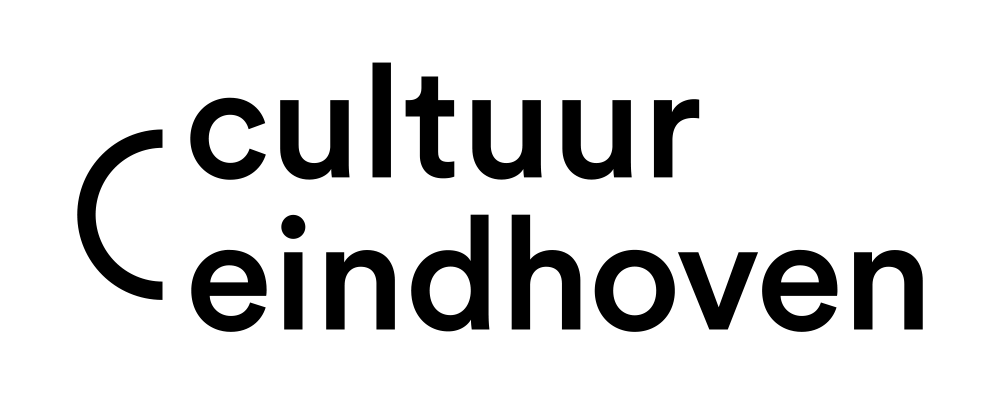Free entry
NUL ZES, Gasfabriek 3A, Eindhoven
31 August and 1 September
7 and 8 September
Saturday 14.00 – 17.00 & 20.00
Movie screening at 20.30
Sunday 14.00 – 17.00
All-man’s-land is an exhibition exploring territories ranging from intimate to collective spaces. How does our body interact with the space surrounding it? How does a room change with our perception? Symbols of fallen political systems change their meaning in correlation to territories. Objects exist co-dependently in the space they inhabit. We all share it; we all move through and within it. Space belongs to all.
The exhibition explores the negative space of humanity: places we come from, spaces we inhabit, territories we explore, and the ties that are born from them.
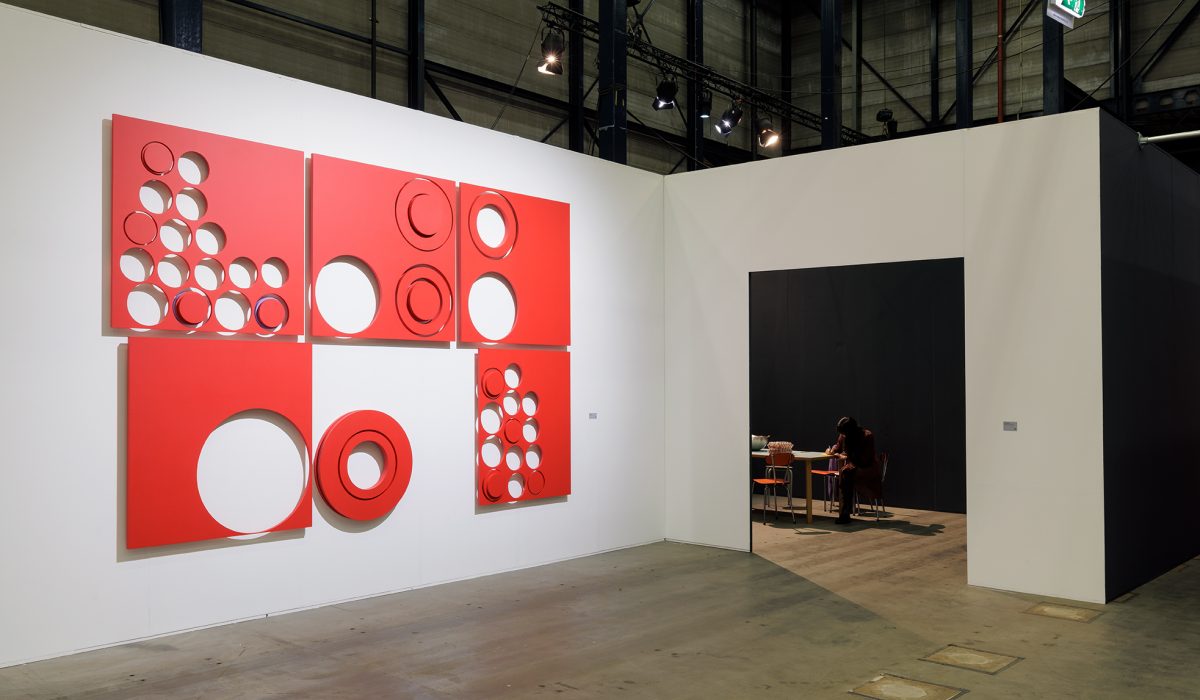
Photo by: Aad Hoogendoorn
EXPO
More about the expo/artists:
All seven projects explore these relationships with space in their own unique way. Britte Koolen and Maya Berkhof both research the space between objects, the dialogue, and the correlations that occur in the site-specific setting. Although stemming from similar inspirations, each artist, in their own way, questions the relation between context and artwork, whether in public space or in conversation between parts of the work.
From objects to the urge to slow down and listen to your surroundings with Zoe d’Hont’s installation, we touch all the senses of experiencing our world. Similarly, Maureen Jonker researches how a body can position itself in space through several workshops during the two weekends. Lola Schot is developing her project on-site as well. During the two-week residency, she is working closely with the space and other performers, and you can witness her outcomes during the exhibition. To wrap up, join us for the film screening of two very intriguing films: Zuza Banasińska presents her video work focusing on the visual characteristics of a particular territory, while the Y? Project (Neža Knez, Danilo Milovanović, Toni Poljanec, Luka Erdani) researches the changing symbol—the Yugo car—of the past Yugoslavian regime.
PROGRAMME
Saturday 31 August
Ongoing performance – Lola Schot ‘In meeting you’
20.30 – Film screening ‘the house that shadows built’ & ‘Y?’
Sunday 1 September
Ongoing performance – Lola Schot ‘In meeting you’
15.00 Workshop – Maureen Jonker ‘The movement library’ apply here
Saturday 7 September
Ongoing performance – Lola Schot ‘In meeting you’
15.00 Workshop – Maureen Jonker ‘The movement library’ apply here
20.30 – Film screening ‘the house that shadows built’ & ‘Y?’
Sunday 8 September
Ongoing performance – Lola Schot ‘In meeting you’
14.30 Deep listening workshop – Zoë d’Hont apply here
Artists
BRITTE KOOLEN – PROSPECTS
Britte Koolen (1994) presents a vibrant red modular installation at Prospects, consisting of six interconnected wall sculptures with rounded forms. The exact arrangement of this site-specific work varies depending on the space where Koolen displays it. This marks the first time she is exhibiting all six pieces together as a single installation.
The work was developed following a residency at Witte Rook in Breda. During the residency, she was given 49 square meters in a park to use freely. Instead of placing objects there, she chose to use the dimensions of the space as inspiration for a series of drawings that ultimately became four books. Over the past six months, she has created a sculptural translation of these drawings, resulting in the modular installation.
A hallmark of Koolen’s work is the focus on rhythm, calmness, and silence. With this piece, she specifically explored how far she could go with the repetition of circular shapes.
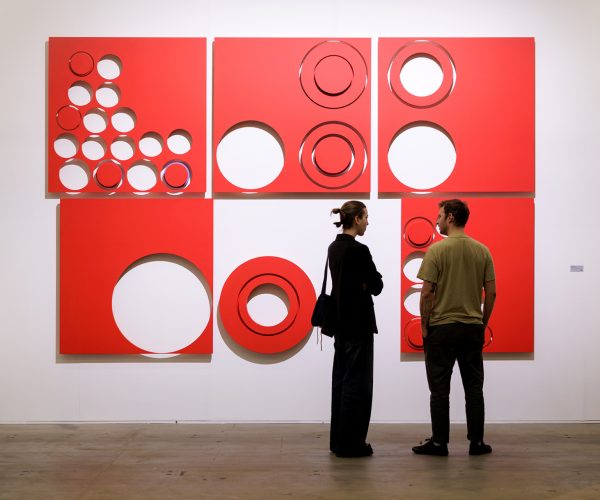
Photo by: Aad Hoogendoorn
More than a hundred circles are concealed within the sculpture. The choice of red for the installation is intentional. Koolen explains, “Red is a very important color for me. When I feel uncomfortable or restless, I try to find something red in the room to calm myself.” The prominence of red allows the artist to quickly find a point of rest. Thus, with a detailed and brightly colored work, the artist has created a beacon of tranquility.
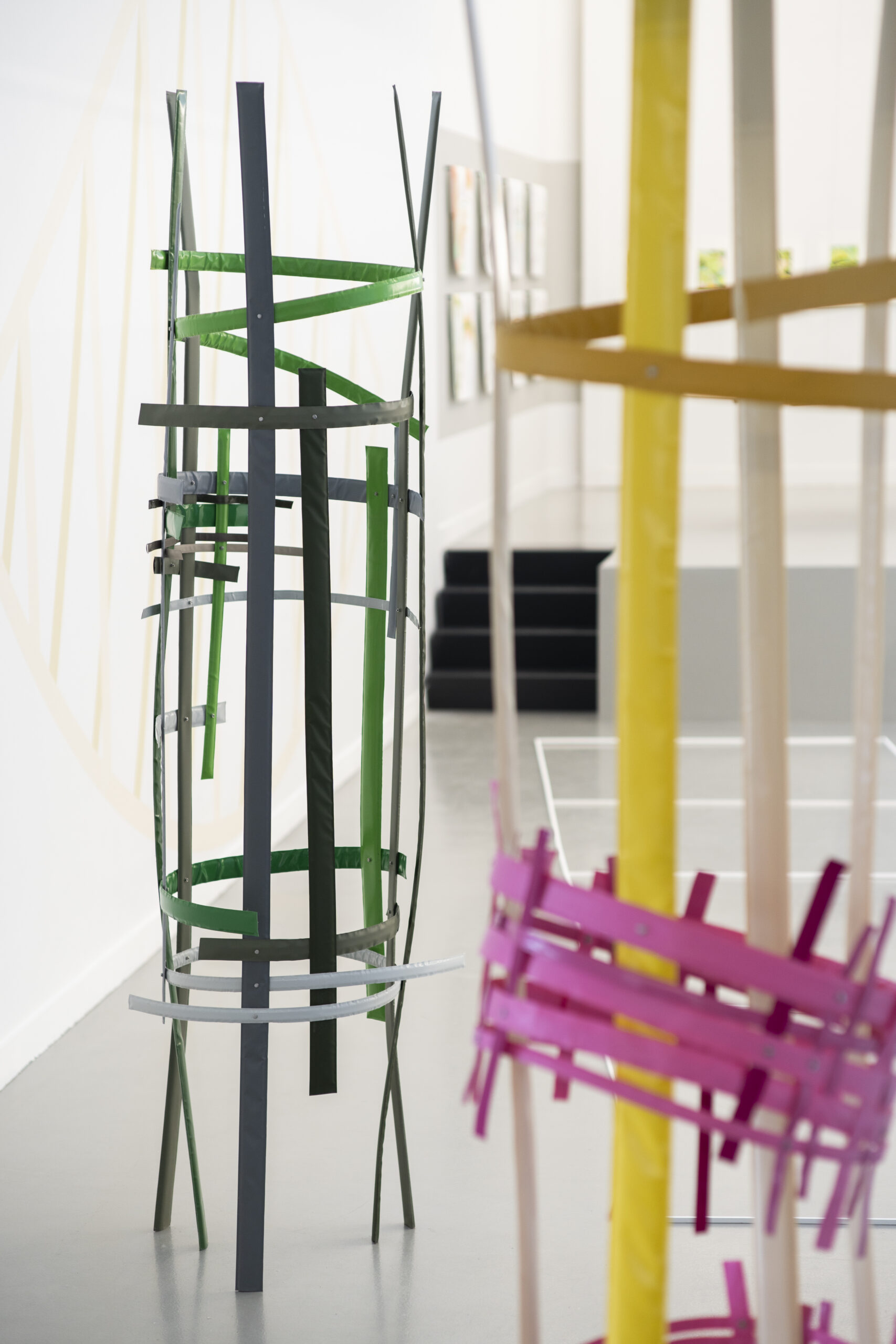
MAYA BERKHOF – WEEFWERK#17, OMSLAG
Maya handles sturdy building materials in an airy manner as if they were dust and thread. Her intricate actions are applied on a large scale; she threads, weaves, or braids the elements of her work into a unified whole, resulting in grand yet tactile spatial textures. Through this approach, the sculptures often appear to float in a transitional phase. During this phase, the works become autonomous systems, visibly capable of aspiration, decay and renewal, growth, and construction.
About the work:
Maya’s inspiration for the pieces in the exhibition stems from the visual appeal of a sampler. A sampler was used as practice fabric for teenage girls in Amsterdam orphanages from the 17th to the 20th century, where they perfected their skills in mending and repairing. The sampler played a crucial role for girls, especially orphans, in securing their futures. Textiles were expensive and heavily used, so tears, holes, and worn spots had to be expertly, almost invisibly, repaired. On their practice pieces, they used contrasting colours so the teacher could quickly spot any mistakes.
For Maya, the act of ‘repair’ has been transformed into the artwork itself—a texture integrated into a larger whole. She sees this as a symbol of old to new, broken to repaired, discarded to retained, and independent to dependent.
The spatial forms that these textures take are often derived from a sense of security, certainty, protection, or safety. For example, the wrapping of a towel, the cage of a fire escape ladder, or the slats that protect a tree during roadworks.
“They are weaves that capture the invisible.”
LOLA SCHOT – IN MEETING YOU
Lola explores the encounter between collected objects, the environment, and people. She brings these elements together in constructed installations, examining the relationship between the body and objects. She investigates the impact of this interaction and how it influences our relationships with one another.
in meeting you delves into the story behind the materials around us, moving beyond their function and responding to overconsumption and conflicting notions of beauty. She positions her body between clay sculpted into forms and a heap of saved buttons, between her relationship with you and your relationship with your toothbrush.
In All-man’s-land, the installation greets the engine room of NULZES, seeking an answer from the space. Lola invites you to In Meeting You, an ongoing performative installation.
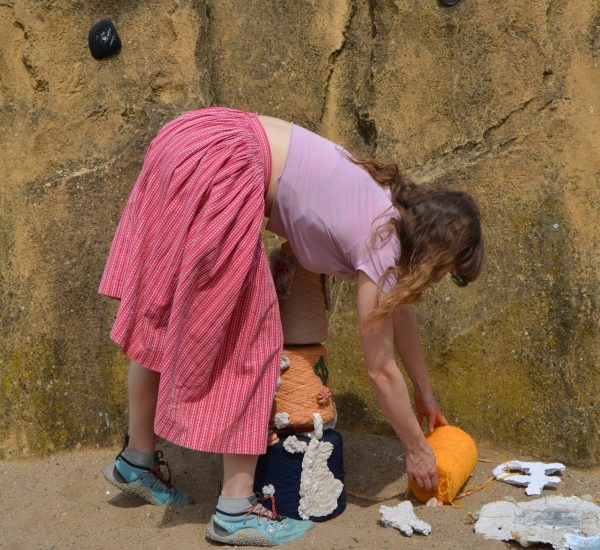
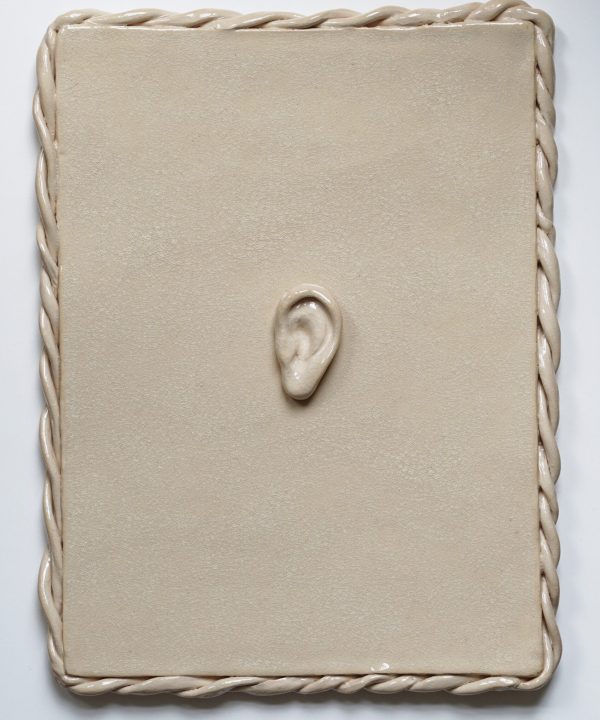
ZOE D’HONT – THE TEMPLE FOR THE EAR
Through a growing archive consisting of audio, texts, drawings, embroidery works, and ceramic objects, Zoë d’Hont investigates the importance of listening in contemporary times. She believes that listening is the solution to the transformations needed: from polarisation to synthesis, from rational knowledge to intuitive understanding, from dominance and aggression to compassion and empathy.
In this exhibition, several works come together for the first time in The temple for the ear, a physical space where the visitor is invited to engage with various forms of attunement. When you slow down and really start to listen, the beauty of the subtle reveals itself, and the reciprocal relationships between contexts, objects, and subjects become apparent.
On set days, a Deep Listening workshop takes place in The temple for the ear in which you can participate. Deep Listening is a method developed by Pauline Oliveros (1932-2016) that explores the difference between the involuntary nature of hearing and the conscious nature of listening. This practice includes physical exercises, sonic meditations, interactive performances and listening to everyday sounds, nature, one’s own thoughts, imagination and dreams.
Apply here to participate in the Deep listening workshop on Sunday 8th September at 14.30.
MAUREEN JONKER – THE MOVEMENT LIBRARY
Maureen Jonker explores the possibilities of arranging the human body in ever-changing spaces and situations. This interest stems from a sport she has practiced for several years – synchronized swimming. Direct references to synchronized swimming do not lie at the surface of her work. However, the urge to create choreographies almost always stimulates the underlying motive.
For this exhibition, Jonker presents The Movement Library, where she mainly focuses on themes of organization and visualization of movement. The Movement Library concentrates on questions such as: How is communication possible when you don’t speak the same language? Which daily actions can be translated into a performance? How can we communicate without verbal communication?
The Movement Library comprises an installation with a motion-sharing system where participants cooperatively create “movements”. The artist will organize several workshops during this exhibition where the audience is invited to participate. The exhibition visitors are asked to make a collage about daily proceedings. After finishing these cards, they pass them to another participant. Without verbal communication about the card content, the other has to interpret these drawings by translating the drawing into “movement”. Eventually, the cards (and movements) will be added to the artists’ database. More information
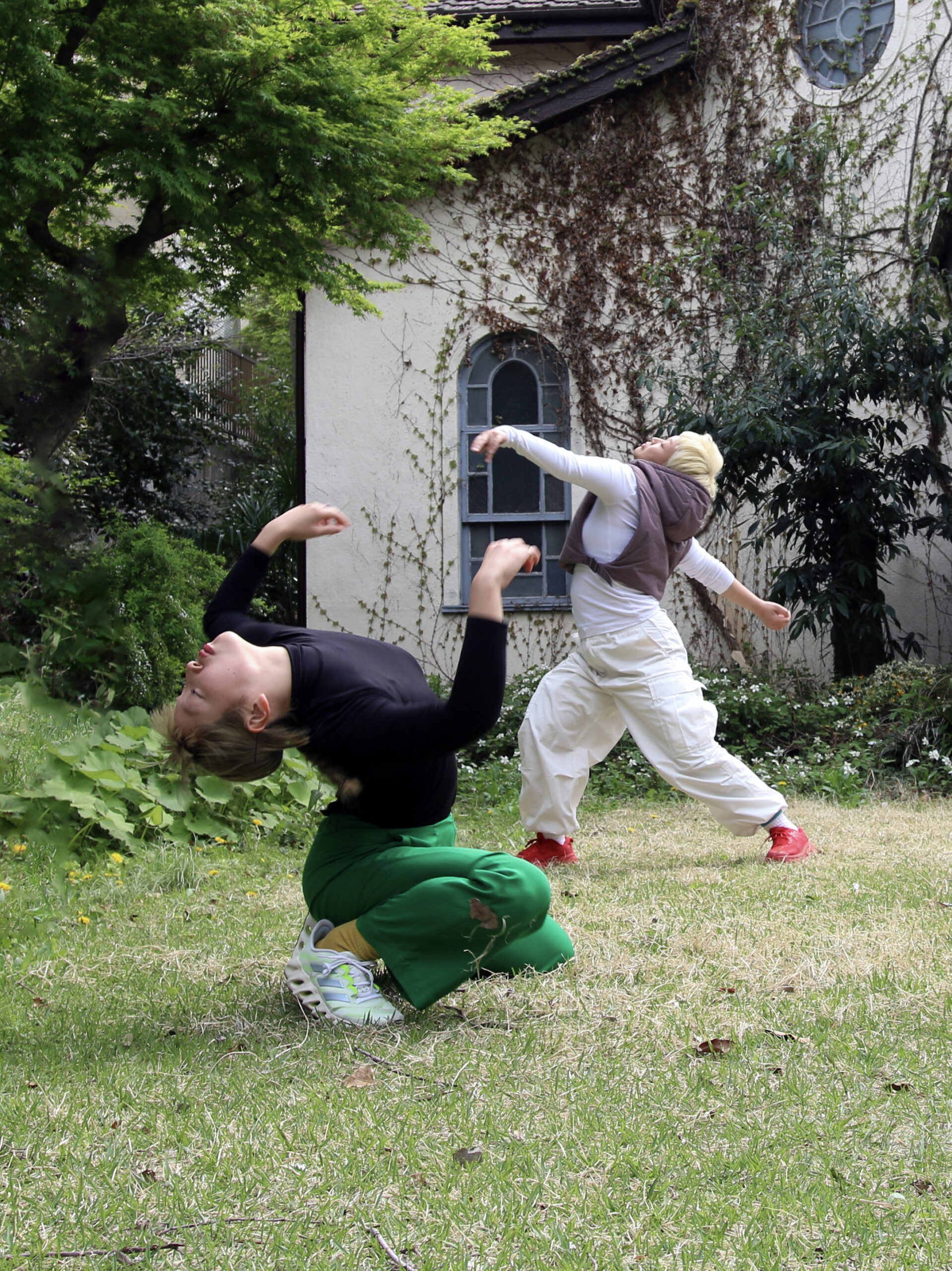
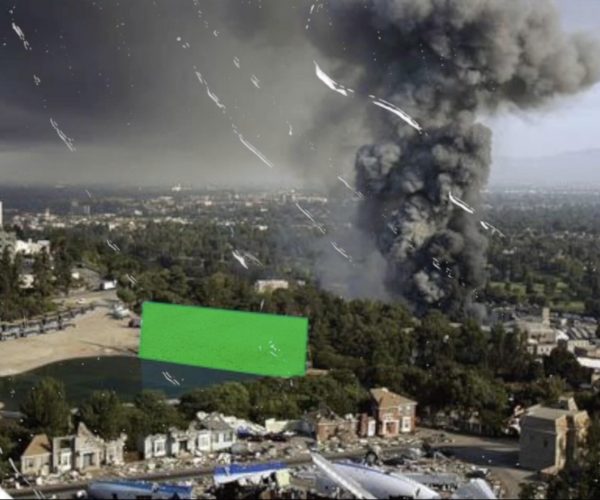
ZUZA BANASIN’SKA – THE HOUSE THAT SHADOWS BUILT
In their practice, Zuza Banasińska is interested in the reproduction of images and how these enable the reproduction of systems, subjects and bodies. In their essay films and installations, they employ a multi-layered approach that incorporates found and recorded video, game engines, sound, and sculpture to construct intricate ecosystems. These serve as spaces for interrogating and destabilizing entrenched notions of identity, gender, and representation.
“The House that Shadows Built” is a film and installation in which Zuza foregrounds sites of cultural production, where reality and fiction merge, spanning: film set locations in California, Iceland and Australia, mines transformed into theme parks as well as industrial and military wastelands. Viewers are invited to confront their own gaze on a journey through places, where worlds are created, and where cinematic tropes participate in the construction of migrant identities.
The work is guided by a seemingly limitless green screen that serves as a tool and a metaphor for the process of assimilation and identity building. Just as the landscapes, it alternates between object available for exploitation and subject actively shaping reality. The idea of “Rückenfigur,” a prominent motif in Romanti- cism that evokes the centrality and dominion of the hu(man), is here subverted by the green screen characters that instead change, blend in, morph and disappear.
Y?
Neža Knez
Danilo Milovanović
Toni Poljanec
Luka Erdani
Zavodi Crvena Zastava (“Red Flag Factories”) was a notable automobile and weapons manufacturer in the former Yugoslavia, renowned for cars like the Fiat 600 (Fičo), the Zastava 101, and the Yugo. Over 140,000 Yugos were exported to the USA in the late 1980s, despite its reputation as the “best worst car ever made.” Yet, much like cult films, the Yugo has achieved cult status and is cherished as a symbol of its era. As one enthusiast puts it, the Yugo is a “personal museum” that brings back memories of Yugoslavia.
The Yugo’s journey from Kragujevac to Pennsylvania is a nostalgic trip through time, highlighting past ideals like job security and affordable housing, now seen as luxuries. While today’s norms include consumer abundance, many still face economic hardships, living in a world where hyperconsumerism is unattainable. This societal shift reflects the illusion that success is solely individual, disregarding systemic inequalities.
Racing through life in pursuit of endless growth leads to burnout. Instead, sitting in a Yugo, one can reflect on an era with different values. For many, the Yugo evokes nostalgia and offers a unique “back to the future” experience, reminding us that envisioning a better future requires reflecting on the past. The Yugo is more than a car; it’s a vehicle for contemplating change and possibilities for a different future.
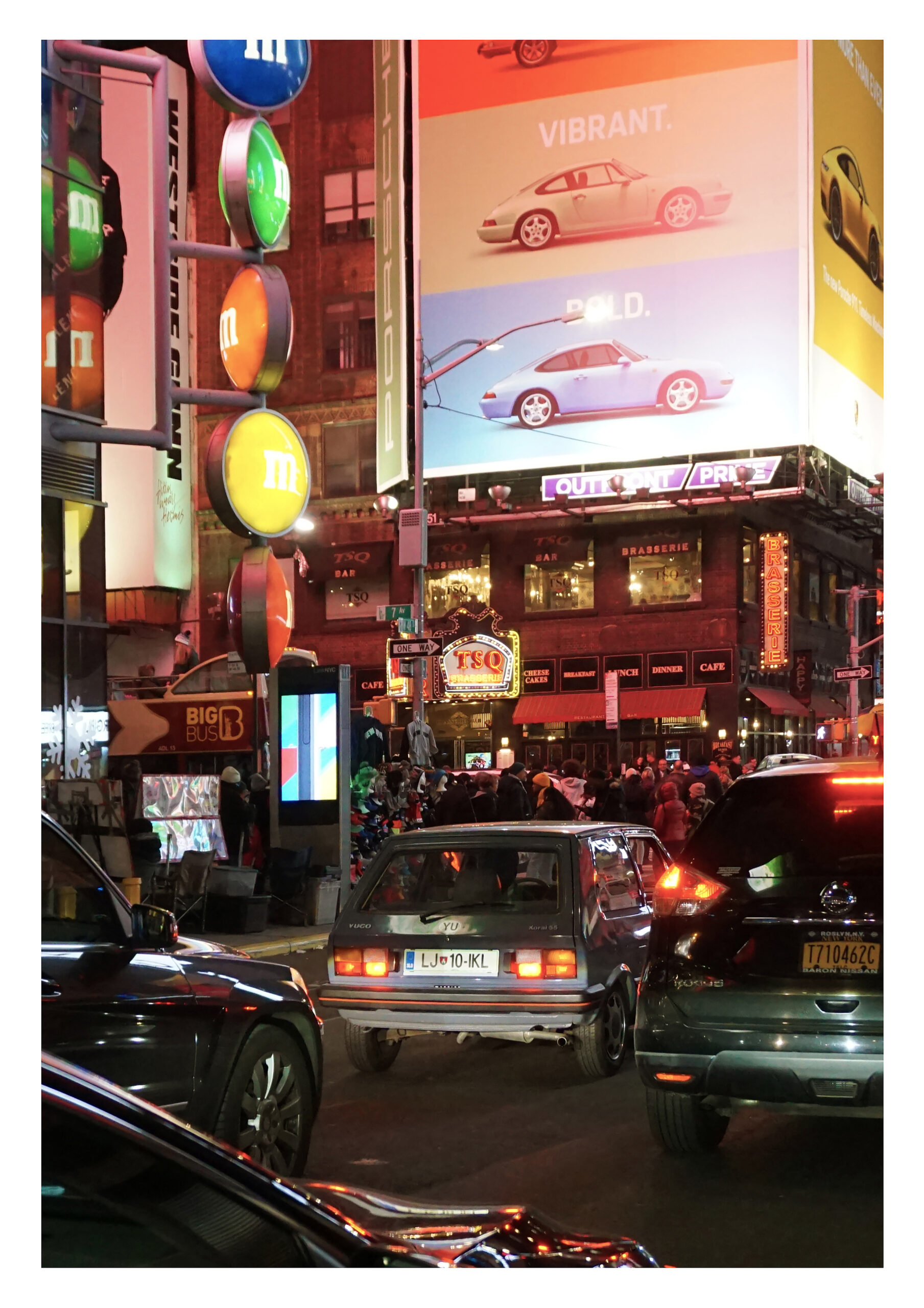
TAC
At TAC, we showcase the latest, coolest, funniest, and most sincere emerging art from the TAC community. We’ve always done this, but now we do it several times a year. TAC in full splendour. Fully connected.
You are warmly welcome!
